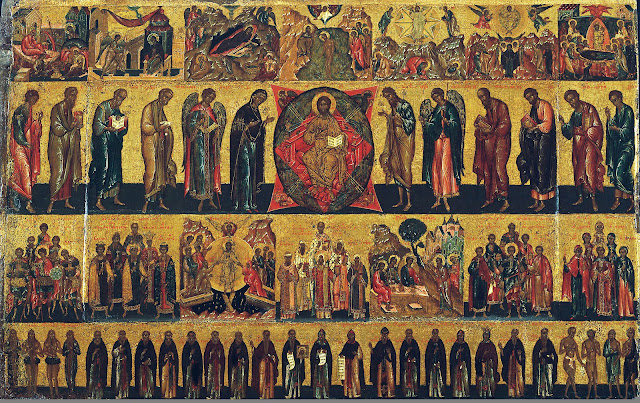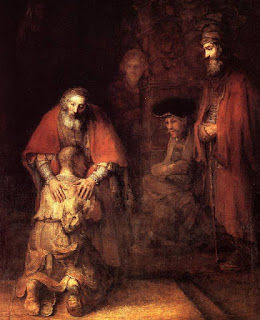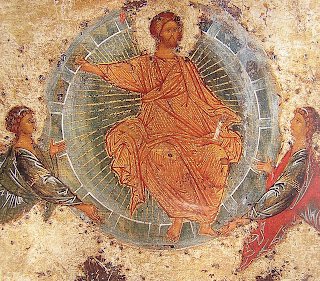On the first
Sunday of Great Lent the church commemorates the “Triumph of Orthodoxy” which
is also known as the Week of Orthodoxy. This feast originated in the 9th
century in light of the final victory of the faithful over the heresy of
iconoclasm. Nowadays, this feast signifies the victory of the orthodox over all
heresies, false teaching and schisms. It is a feast day of the Truth and the
victory of Christ over all the weaknesses and mistakes that go against the
teachings of the church.
The iconoclasm
heresy originated in the 8th century in present day Greece and very quickly
spread throughout the Christian world. Christians were persecuted for painting,
venerating and simply having the holy icons. In fact, many were martyred,
imprisoned and killed.
The seventh
Ecumenical Council (787) reaffirmed the need and importance of venerating icons.
However, persecutions continued until 843 when a pious empress supported the final triumph of Orthodoxy over the iconoclasm heresy. Since then,
a special service was created in honor of this victory in orthodox cathedrals
when a bishop is present on the first Sunday after the start of the Great Lent.
Many people
were ready to give up their lives while defending the holy icons. So what is an
icon? What is its meaning? All of these questions are answered in a talk with
Father Sergious, who is in charge of the icon-painting studio and icon painting
school at St. Elisabeth Convent.
What is an icon
and how can one describe an icon using only three words?
The first word is “picture”. Since an icon is
indeed a picture of a person, a human. Nevertheless, not every picture is an icon.
Initially it can be very difficult to establish the necessary requirements for
a picture to be referred to as an icon and to determine what is and what is not
an icon. For example, if we take The Return of the Prodigal Son by Rembrandt,
the painting is essentially not an icon.
However, the painting expresses a
theological and very profound love of God towards man in comparison to some of the more contemporary images of the same biblical event. Of course, according to the church canons we cannot place this painting into the iconostasis of the church or serve and venerate it. Still, from the point of view of a “picture” there is a definite and concrete theological perspective that the painting does indeed contain.
Very often
in the fragments of icons, mosaics, or frescoes one could see emperors, empresses,
as well as rich donors praying in front of the Lord or the Mother of God. What
is more interesting is that the image is created in accordance with the church
canons.
This is
because even the most “correct” and canonical icons can include images of
regular, earthly and secular people. Such people are not in the center of the icon
because Christ is and must be the center but these people can still be depicted
as they are turned to Christ. Therefore, even regular people have the
right to be pictured, even if he or she is still alive. From this, you can see
that an icon is much more complex than originally perceived.
An icon is a picture, along with the presence of the Image of God, but this Image cannot be captured, it cannot be grasped by any human logic and it cannot be contained in any amount of words or paragraphs which say which icon has this “image” and which does not.
If an icon is present then God is present as well.
 “The idea of
a New Testament icon, as interpreted by the Holy Fathers, is to properly
express, clearly explain as much as possible through artistic expression, the truth
of God’s incarnation. The image of Jesus is the image of God. (L. Ouspensky “Theology of the Icon”)
“The idea of
a New Testament icon, as interpreted by the Holy Fathers, is to properly
express, clearly explain as much as possible through artistic expression, the truth
of God’s incarnation. The image of Jesus is the image of God. (L. Ouspensky “Theology of the Icon”)
If we take this quote and look at the icon of Christ from the Zvenigrod
Deesis - an image that is undoubtedly an icon, then we can conclude that here
the icon expresses the dogmatic truth of incarnation with extreme precision and
fullness that is not easily accomplished. There can be no argument here and I
think that while looking at the image one can start to assert that if such an
icon exists, then there is a God (Father George Florensky said something very
similar: “If there is an icon of the holy Trinity then there is a God.)
The height of such artistic expression, that is presented to us, also
prompts us to think that masterpieces cannot reach such levels alone, without
God and the acknowledgement of his existence. Here, while looking at this
icon (Christ from the Zvenigrod Deesis) the incarnation of God is expressed
with such emphasis that you do not always see in contemporary icons. Icons may
have all the canonical aspects, gold leaf plating and other features but you do
not always see the most important aspect, the truth of our Lord’s incarnation - is
not there.
An Uncontainable Combination
 Everyone
knows that artistic forms of expression existed long before the time of Christ.
Ancient art forms are still unattainable…but these masterpieces generally
depicted secular, human beauty which was often very generic, distant and cold.
For example, take the image of Aphrodite. The image is one of beauty and
harmony but at the same time, she is not alive, not real and therefore very
distant to the everyday person. These art forms either depicted false idols or
gods and the beauty was rather fictional and unattainable rather than being real
and personal.
Everyone
knows that artistic forms of expression existed long before the time of Christ.
Ancient art forms are still unattainable…but these masterpieces generally
depicted secular, human beauty which was often very generic, distant and cold.
For example, take the image of Aphrodite. The image is one of beauty and
harmony but at the same time, she is not alive, not real and therefore very
distant to the everyday person. These art forms either depicted false idols or
gods and the beauty was rather fictional and unattainable rather than being real
and personal.  Christ comes
into the world that appears to be beautiful but also deceitful because the
world that our Savior comes into is filled with sin. Christ is able to show us
true beauty. Beauty that is very human in one sense and the beauty that each one of us
can feel. That same beauty is also filled with the Devine. An icon is also a phenomenon
and a true wonder of the world because it processes the Devine and at the same
time is made up of earthly materials such as wood and paint. Even the person
who paints the icon is typically an ordinary human and not always a
saint.
Christ comes
into the world that appears to be beautiful but also deceitful because the
world that our Savior comes into is filled with sin. Christ is able to show us
true beauty. Beauty that is very human in one sense and the beauty that each one of us
can feel. That same beauty is also filled with the Devine. An icon is also a phenomenon
and a true wonder of the world because it processes the Devine and at the same
time is made up of earthly materials such as wood and paint. Even the person
who paints the icon is typically an ordinary human and not always a
saint. You see, in a
way an icon repeats this unique paradox - where the uncontainable and combinable
is combined, the same way as it is in Christ. It is difficult to imagine God
and Man in one. It is hard to comprehend because everything human is always
limited in understanding but everything related to God is grand
and uncontainable. The icon also connects the Devine and the human aspects and
we in turn can see its beauty, its phenomena and its complexity. Once again,
since we can not explain God in a few paragraphs we cannot in the same way
explain an icon and its mystery. This is why we need to look further and more in
depth. The ability to understand and interpret an icon comes with the experience
of every individual meeting with God and their individual connection to their Maker.
This is because our entire life is a path towards meeting the Lord and so our
closeness to God is proportional to our ability to feel the beautiful mystery
of the icon.
You see, in a
way an icon repeats this unique paradox - where the uncontainable and combinable
is combined, the same way as it is in Christ. It is difficult to imagine God
and Man in one. It is hard to comprehend because everything human is always
limited in understanding but everything related to God is grand
and uncontainable. The icon also connects the Devine and the human aspects and
we in turn can see its beauty, its phenomena and its complexity. Once again,
since we can not explain God in a few paragraphs we cannot in the same way
explain an icon and its mystery. This is why we need to look further and more in
depth. The ability to understand and interpret an icon comes with the experience
of every individual meeting with God and their individual connection to their Maker.
This is because our entire life is a path towards meeting the Lord and so our
closeness to God is proportional to our ability to feel the beautiful mystery
of the icon.
We need each
other
It is almost
as if all the iconographers are in essence doomed: when we sit with our
paintbrushes and we feel a colossal pressure of sin, our personal and that of
the rest of the world. It is difficult for us because we need to depict the
Truth of our Lord’s incarnation. Maybe people no longer need this Truth. It is
very important to have people in this world who are in need of this truth and
the Image of God. If we have people like that then we will still be able to do
something. Even if we are “overeducated” and we have the most ideal sketches in
front of us: We will not be able to do anything.
Why did
Andrei Rublev paint icons the way he did?
It is
because in his time people needed God. People could not live without God. This
was his real inspiration that enabled him to depict Christ. Only this. It was
not his personal talent, which without a doubt he did possess as an artist. Moreover,
he was quite talented, may I add. Nevertheless, along with the talent
there was a desire to be with God. In addition,
if we can talk to people about God, show them the true beauty of the icon,
maybe this might help people get back to the one main beauty - which we see in
Christ.
This is why we have a very serious duty and responsibility in front of others.
























CONVERSATION